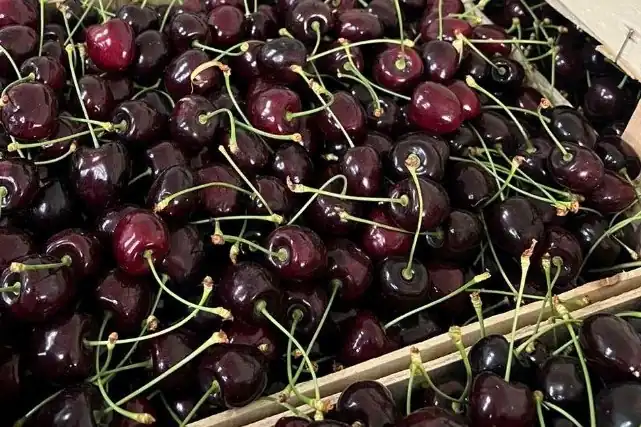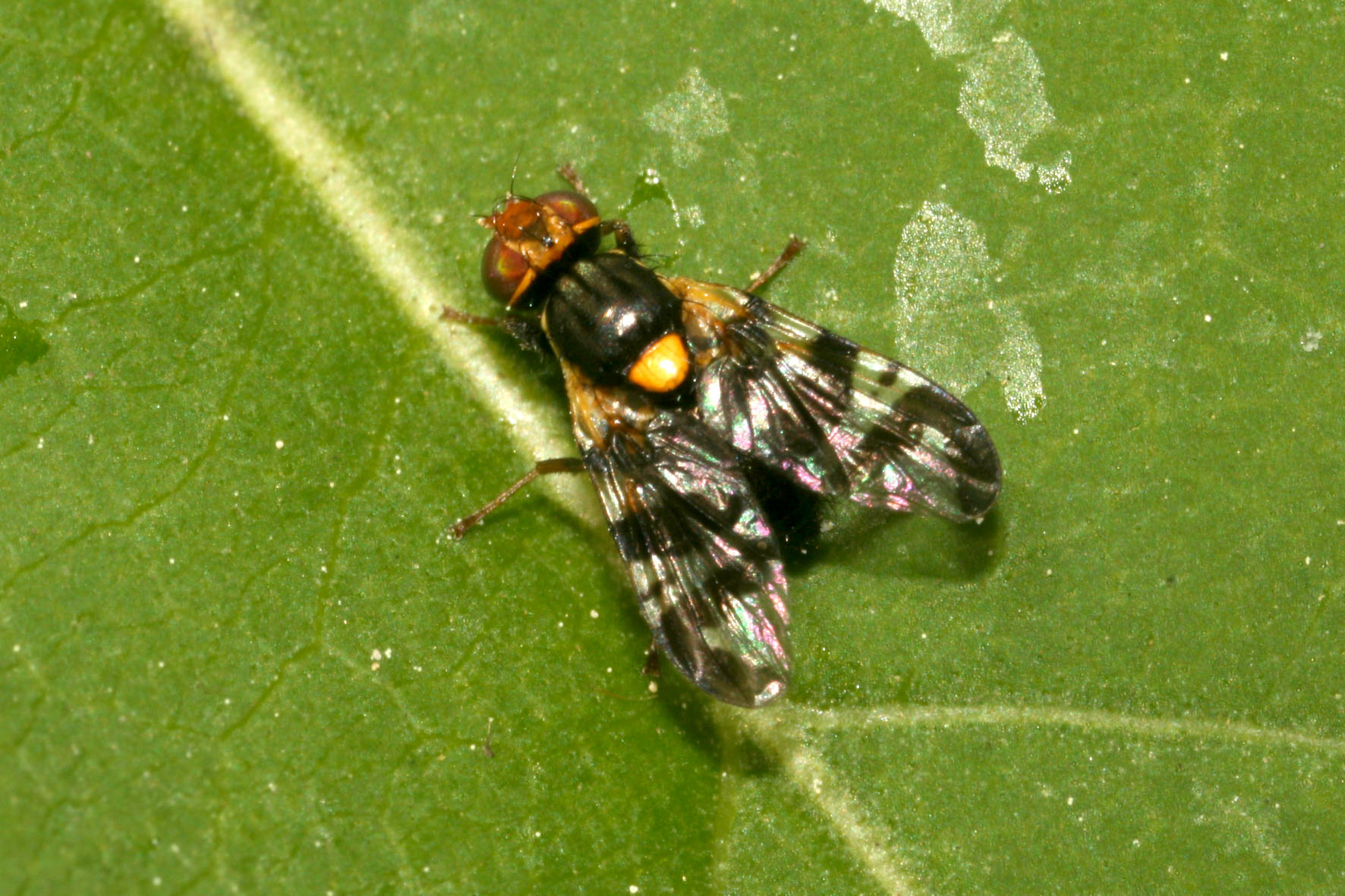By fall, Washington State University may release its first two new cherry cultivars in nearly 20 years.
The yet-unnamed R3 and R19 cherries are nearing the end of Phase 3 trials and, if they have a good season, will be given the green light, said Per McCord, the university’s cherry breeder.
“If the varieties do well this year, then yes, these varieties should be released,” McCord said. “There is demand for them, and they meet the criteria that the industry wants.”
Meanwhile, researchers and their commercial collaborators will continue to study how the trees perform on different rootstocks and training systems while nurseries propagate for tree delivery at least two years down the road.
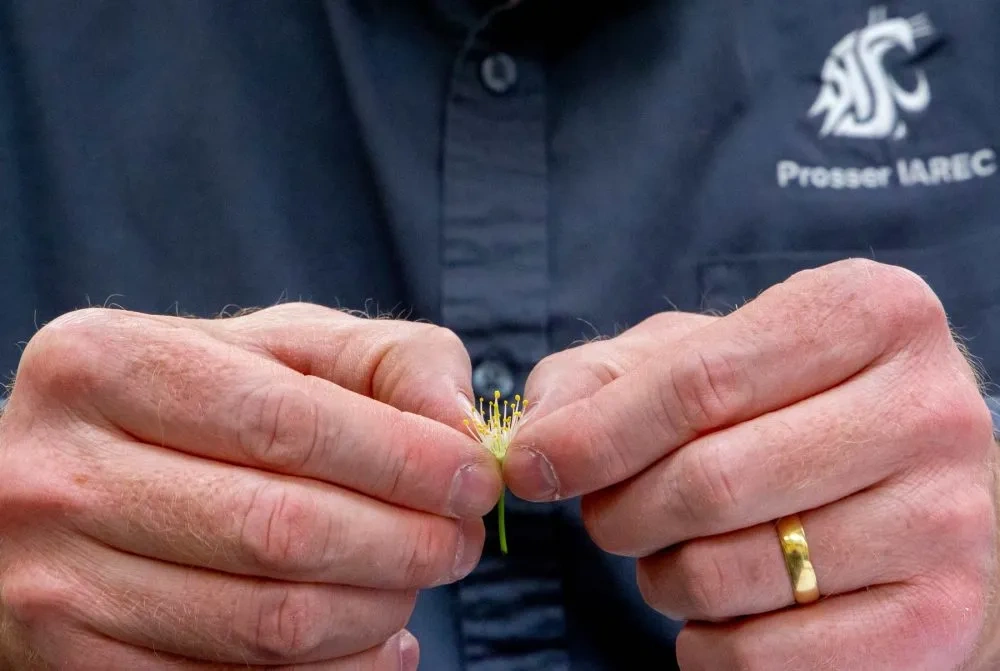 Image 1. Washington State University cherry breeder Per McCord counts and measures the stamens of an R19 cherry blossom in April at the Irrigated Agriculture Research and Extension Center near Prosser. As the university prepares to release the cherry for commercial production, McCord’s team is documenting the intricacies of plant and fruit characteristics as required to apply for intellectual property protection. (Ross Courtney/Good Fruit Grower)
Image 1. Washington State University cherry breeder Per McCord counts and measures the stamens of an R19 cherry blossom in April at the Irrigated Agriculture Research and Extension Center near Prosser. As the university prepares to release the cherry for commercial production, McCord’s team is documenting the intricacies of plant and fruit characteristics as required to apply for intellectual property protection. (Ross Courtney/Good Fruit Grower)
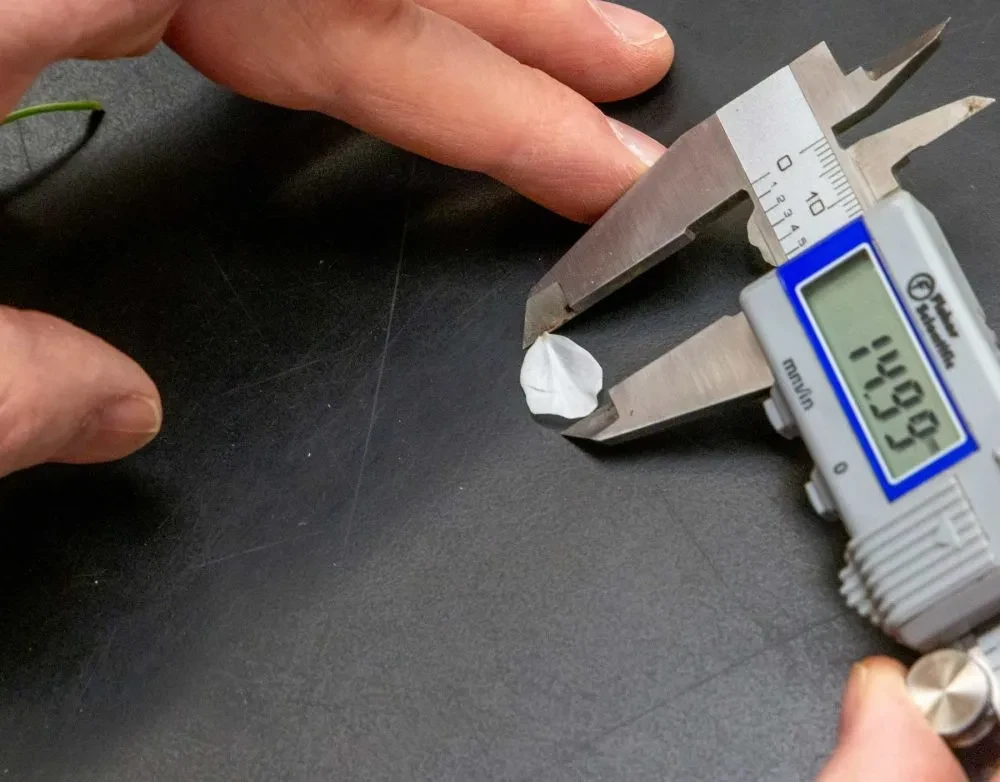 Image 2. Who cares about the length of an R19 cherry flower petal? The U.S. Patent and Trademark Office. Learning such details is part of the path to commercialization for one of Washington State University’s newest cherry cultivars. (Ross Courtney/Good Fruit Grower)
Image 2. Who cares about the length of an R19 cherry flower petal? The U.S. Patent and Trademark Office. Learning such details is part of the path to commercialization for one of Washington State University’s newest cherry cultivars. (Ross Courtney/Good Fruit Grower)
Breeding goals and cultivar background
“It’s a slow-rolling process” to produce a lot of trees and figure out how best to grow them, said Rob Blakey, research and development director for Stemilt Growers and a member of the university’s cultivar licensing committee, an advisory group.
The R19 is a cross of Benton and Selah. The R3’s parents are Rainier and an unnamed variety, 19-21B. They would be the first new cherry cultivars from WSU since 2007, when the university released Kiona and Cowiche. That’s been McCord’s goal since he was hired in 2018: to reboot the breeding program.
Both new cherries harvest early. R19 ripens with Chelan, R3 a few days later. Both grow larger, firmer and sweeter than Chelan, the early-season standard, according to most trial data. Good cherries that harvest toward the beginning and end of the season are among the breeding program’s industry priorities.
The R29 is in Phase 3 trials, but data collection is two years behind the other two. The university also has about a dozen selections in Phase 2 trials.
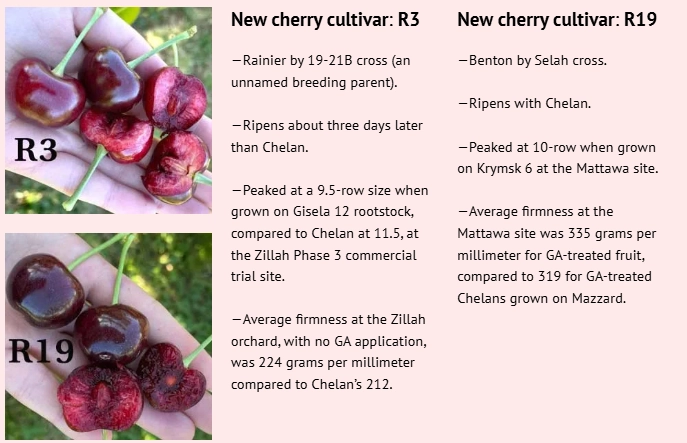 Image 3. Source: GoodFruit
Image 3. Source: GoodFruit
Prepping for release
To get ready for release, McCord and his team are preparing applications for intellectual property rights programs with the U.S. Patent and Trademark Office or the U.S. Department of Agriculture’s Plant Variety Protection Office, or both. They don’t plan to pursue international protection right away, he said.
In a greenhouse and a basement laboratory at WSU’s Irrigated Agriculture Research and Extension Center, McCord and his crew are painstakingly documenting details about flower petal length, branching patterns and other characteristics. One of the hardest jobs is matching the hues of tiny flower parts, such as hairlike filaments, against a book of standards, McCord said. The applications call for such detail.“Measuring the colors of small things is challenging,” he said with a laugh.
The university also must select trade names and set royalties for the cherries, a process that should move faster than with apples because cherries are rarely sold to consumers by variety, said Jeremy Tamsen, director of the WSU office of commercialization.
Promising performance
This year will be the third chance to collect fruit data under commercial management conditions. Those Phase 3 trials were planted in 2021 in Zillah and Mattawa.
Researchers have data comparing yields, fruit size and firmness, but not always across similar rootstocks and management decisions.
In commercial packout reports, both cherries peaked at larger row sizes than Chelan. At the Zillah commercial site, both varieties and Chelan were grown on Gisela 12 rootstocks. In Mattawa R3 and R19 were grown on Krymsk 6 rootstocks and Chelan on Mazzard, and the grower applied gibberellic acid (GA).
The university will have consistent rootstock comparisons from Mattawa this year as new acreage of R19 fruit on Mazzard reaches maturity.
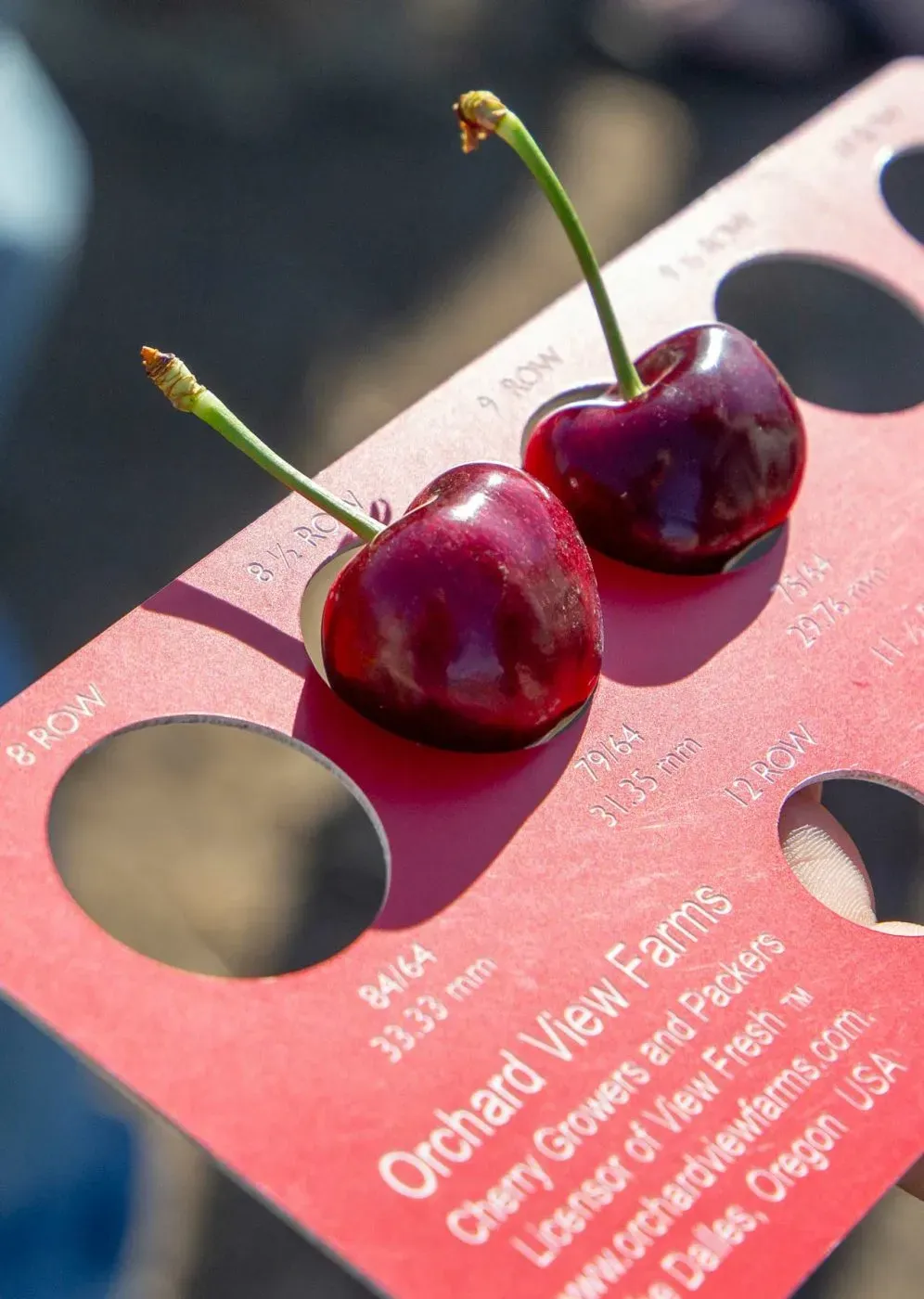 Image 4. The R3 cherry, left, ripens a little after Chelan, while the R19 ripens about the same time as Chelan, an early-season standard. Both new varieties grow firmer, larger and sweeter than Chelan. (Ross Courtney/Good Fruit Grower)The R3 cherry, left, ripens a little after Chelan, while the R19 ripens about the same time as Chelan, an early-season standard. Both new varieties grow firmer, larger and sweeter than Chelan. (Ross Courtney/Good Fruit Grower)
Image 4. The R3 cherry, left, ripens a little after Chelan, while the R19 ripens about the same time as Chelan, an early-season standard. Both new varieties grow firmer, larger and sweeter than Chelan. (Ross Courtney/Good Fruit Grower)The R3 cherry, left, ripens a little after Chelan, while the R19 ripens about the same time as Chelan, an early-season standard. Both new varieties grow firmer, larger and sweeter than Chelan. (Ross Courtney/Good Fruit Grower)
 Image 5. This year, the university also may release the R3 cherry variety, shown in 2023 in a Zillah orchard. (TJ Mullinax/Good Fruit Grower)
Image 5. This year, the university also may release the R3 cherry variety, shown in 2023 in a Zillah orchard. (TJ Mullinax/Good Fruit Grower)
Ongoing evaluations and next steps
During the early days of Phase 2 trials, the R19 set less heavily than Chelan, which tends to overset. Since then, both varieties have had comparable yields in Phase 3 commercial trials, McCord said.
Even as they release the cherries, the backers want to see how they perform under a wider variety of commercial management practices on a variety of rootstocks. WSU will try to explore some more, but growers eventually will have to make their own appraisals.
“No matter how much we do, growers need to do their own experiments,” McCord said.
Blakey of Stemilt, which hosts the Mattawa Phase 3 trials, likes what he has seen so far from both cherries. They scratch the industry’s early-season itch, for one thing.
 Image 6. McCord, facing camera, gives a tour of research blocks of new cherries under evaluation in 2021 in Prosser. (TJ Mullinax/Good Fruit Grower)
Image 6. McCord, facing camera, gives a tour of research blocks of new cherries under evaluation in 2021 in Prosser. (TJ Mullinax/Good Fruit Grower)
Industry involvement and commercialization
“Diversification on the front end (of the season) is important,” he said.
When the university releases the cherries, discussions about how to optimize production will continue. While nurseries bulk up on budwood, the industry would need to direct some of the limited supply of trees to more trials comparing rootstocks and training systems, a step in the evaluation process often called Phase 4.
“Say a variety gets really successful,” Tamsen said. “Then the research doubles down.”
Some growers who want in early could purchase and plant trees before that, making their own decisions about rootstock and training.
This commercialization path is slow but well worn. Similarly, last year, WSU released the WA 64 apple, to be marketed as Sunflare. Growers have ordered trees, but the university still has ongoing rootstock and system trials. (See “Here comes the Sunflare apple.”)
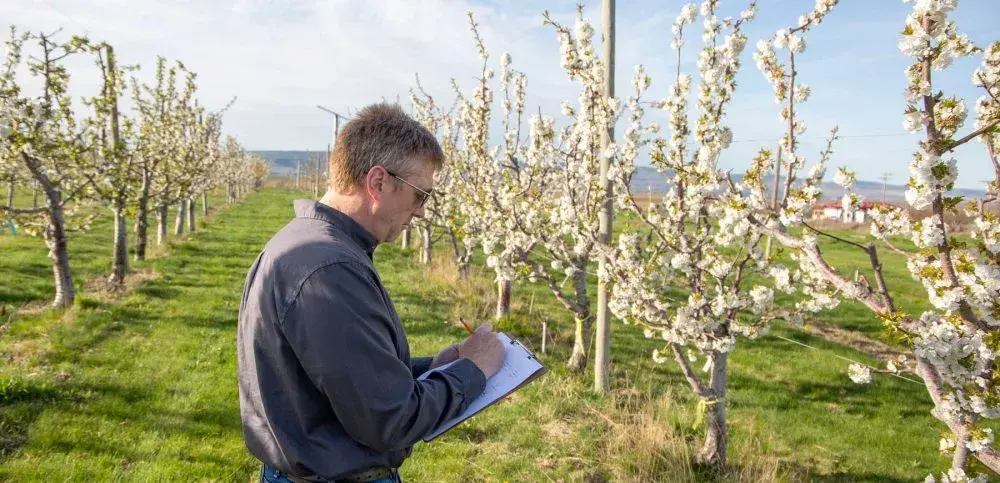 Image 7. McCord documents bloom information in the Roza research orchard as part of the intellectual property protection application process. (Ross Courtney/Good Fruit Grower)
Image 7. McCord documents bloom information in the Roza research orchard as part of the intellectual property protection application process. (Ross Courtney/Good Fruit Grower)
Grower perspective and virus rule change
Megan Thompson of Cascade Cherry Growers in The Dalles, Oregon, is excited to test the market. She considers both varieties an improvement over Chelan and hopes any concerns about firmness or a few days’ worth of timing can be overcome with management, she said.
She is a member of the breeding program advisory committee and the cultivar licensing committee. Growers from Washington and Oregon contribute money to WSU’s breeding program.
“Let’s get it out there and see,” she said.
One of the new cherry cultivars Washington State University plans to release soon has a virus so common and benign, the state of Washington plans to drop it from its screening program.
The R3 cherry, a cross between Rainier and 19-21B, an unnamed variety, has cherry virus A, a common virus that appears to pose no symptomatic risk.
“It’s widespread and not known to cause disease,” said Scott Brooks, plant services program manager for the Washington State Department of Agriculture.
The state does not routinely test for CVA during the certification program, only screening for it as part of a panel if a tree has virus symptoms.
The Northwest Nursery Improvement Institute petitioned the department to remove it from that list of pathogens. The department plans to do just that, completing the process this year, Brooks said.
Ross Courtney
Good Fruit Grower
Cherry Times - Tutti i diritti riservati












